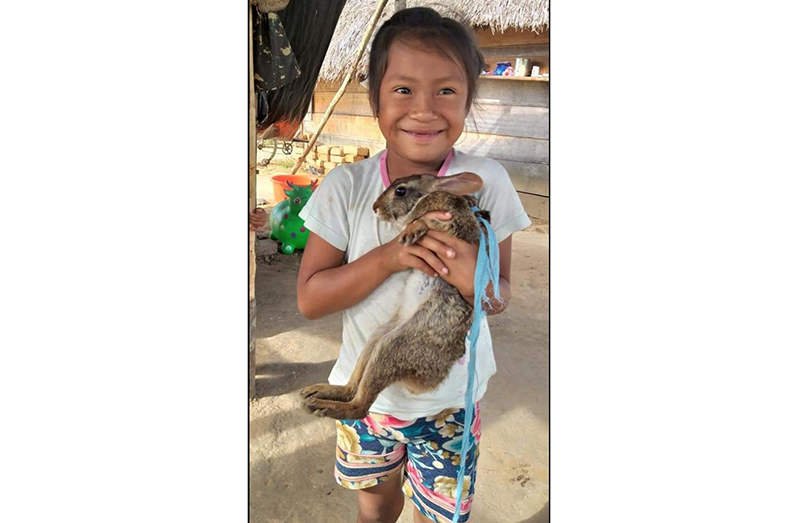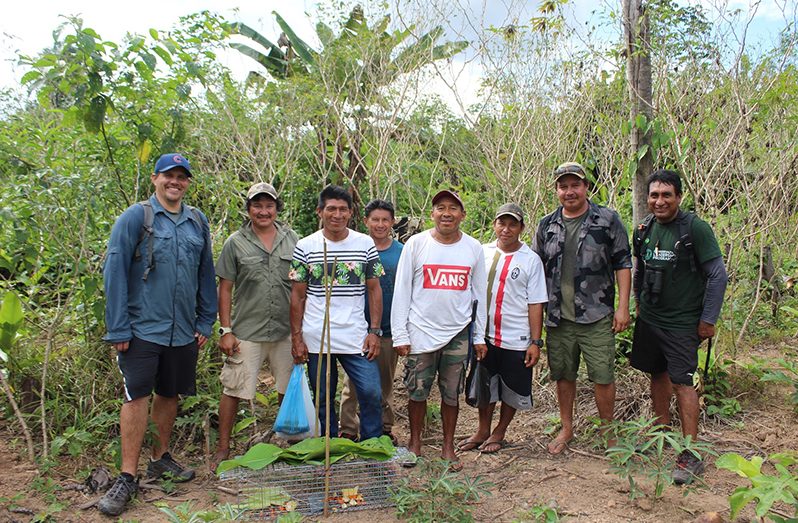KARAUDARNAU Village in the deep south of Region Nine (Upper Takutu-Upper Essequibo) is collaborating with the South Rupununi Conservation Society (SRCS) with support from the Field Museum, the Royal Ontario Museum, the University of Florida and Jacksonville Zoo to genetically identify a species of rabbit that has been roaming in the farmlands.
For decades, the residents have known that there are wild rabbits around and many have kept them as pets, even giving them a local Wapichan name ‘Kazoo-tain’ (meaning long ears). However, the species remains undiscovered to science.
It is therefore not known whether the species of rabbit is the same that can be found in Suriname or Brazil, if it is a subspecies, whether it is a new species entirely or if it is a domestic rabbit that has gone feral and multiplied.
“Without this information, it is difficult to manage the species as it cannot be determined whether they are a native or invasive species,” SRCS Programme Coordinator, Neal Millar, told this publication recently.

To resolve this, and subsequent to the collaboration mentioned above, SRCS has trained local residents from Karaudarnau Village to set traps to capture the rabbits. If these traps do not work, the residents also have their traditional methods of trapping which could prove to be more effective than the scientific traps being used.
The traps were set in four farms around the village where the rabbits have been known to be sighted and are referred to by the residents as “hotspots”.
When setting the traps, the team also found rabbit droppings which were evidence that the rabbits were nearby. The traps were filled with items for bait such as carrots, potato leaves and peanuts which residents suggested that the rabbits eat. The residents that were trained will check the traps every morning to see if they have captured a rabbit and to rebait the traps.
Once a certain number of rabbits have been captured, they will be processed and sent to the Field Museum in Chicago and the Royal Ontario Museum in Canada for analysis. Using DNA sequencing, scientists at these museums will then be able to determine the species of rabbit that is present in Karaudarnau.
Concurrently, SRCS has also assisted four residents from the village to share a survey with other members of the community. The purpose of this survey is to find out more local information about the rabbits including how residents perceived them, how long they have been present in the village and where they can be most commonly found.

According to Millar, SRCS will then continue to collaborate with Karaudarnau Village to collect more important scientific information such as the range of the species, the type of habitat it prefers, its behaviour and its diet. This data can then be used to create a plan for how the species could be managed and to create measures to ensure that either the species is conserved for future generations if it is a new species or limited if it is an invasive species so that it does not impact other native biodiversity.
“This is a very interesting project for a number of reasons. Firstly, it highlights the importance of local knowledge as the species has been known about locally for a long time and only because of this are efforts being made to scientifically identify it,” Millar said.
“Like all of the projects being implemented by SRCS, the activities are being conducted by the residents of Karaudarnau themselves and they are being equipped with the skills needed to do these types of assessment by SRCS. It reinforces that the residents of the Rupununi are the best persons to conduct research and that more effort is needed to build their capacity to do so,” he added.



.jpg)








